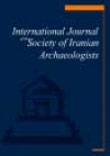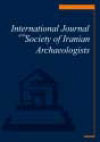فهرست مطالب

International Journal of the Society of Iranian Archaeologists
Volume:2 Issue: 4, Summer-Autumn 2016
- تاریخ انتشار: 1395/05/29
- تعداد عناوین: 8
-
-
Pages 1-14Compared to other regions in the Near East, our knowledge about the Neolithic period in Iran is rather limited; in the Central Zagros area, however, we have a more reliable set of information about this period. Except some areas in Fars and Bakhtyari, less information is available for southern Zagros, including Kohgiluyeh region. Kohgiluyeh region in southern Zagros is located between two major cultural zones of Khuzestan and Fars in southwestern Iran. This intermediate region is archaeologically less known compared to its neighbors. In the present paper, an Early Neolithic site is introduced. On the basis of surface collection, with majority of bladelets and cores, the site has been dated to the early Neolithic or Aceramic Neolithic. Considering the modern climate of the region and environmental context of the site we may postulate that the residents of the site practiced a simple form of early-agricultural economy. Due to the mountainous landscape of the region, their substance pattern had been based on using the nearby resources through hunting, food gathering and using water sources.Keywords: Bibi Zoleikhaee, Kohgiluyeh, Pre-Pottery, Neolithic, Archaeological survey
-
Pages 15-25The interval between the periods of Sialk III6-7 and IV1 (3400-3300 B.c.) on the Central Plateau of Iran (hereafter, CPI) is often introduced as an intermission in archaeological interpretations. A review of the features and changes in the architectural structures, administrative documents, economic materials, technical tools and burial evidence belonging to Sialk III6-7 and IV1 periods from prominent archaeological sites in this region clearly indicate that the interval between these two periods can be considered as a transitional period, rather than as a gap. However, in this period, some sites such as Sialk, Ghabristan, Shad Qoli Khan and Qoli Darvish are abandoned while Ozbaki and Arisman continue, albeit with shifts in occupation. Much of the archeological evidence related to the Sialk III6-7 and IV1 periods, obtained from the ancient sites of the CPI, indicates the presence of the late Susa II culture in the region, demonstrating a link between the CPI and the SW of Iran. These two periods are considered as transitional periods, as the similarities among the cultural changes in Sialk III6-7 and IV1 periods are considerable. Therefore, this one-hundred-year period is placed in the context of the transitional period.Keywords: Central Plateau of Iran, Transitional Periods, Sialk III6-7, Sialk IV1
-
Pages 26-36Despite the fact that the prehistoric period and particularly the Bronze Age in Central Zagros have been well studied and identified to some extent, no systematic research has been conducted by foreign or Iranian archeologists on the subject of Harsin County. A total of 29 sites belonging to the Bronze Age have been identified in the archeological investigation of the region between 2002 and 2010. Based on the surface findings, all of these sites belong to the Middle and Late Bronze Age. Furthermore, it was discovered that most of these sites formed on the banks of permanent and seasonal rivers and lakes. As for the extent of residential sites of Bronze Age in the region and their location, it is implied that there were rather important and large sites along with small villages, indicating close relationships with the neighboring regions at the end of the third millennium and the beginning of the second millennium B.c. (Middle Bronze Age). The significance of the current study lies in the fact that no evidence was obtained from the Early Bronze Age (Yanik Culture), while the region has maintained numerous cultural relationships with the neighboring areas such as Kangavar with ceramics such as Godin III, Mahidasht and Lorestan from the Middle to Late Bronze Age. In addition to discussing several assumptions, as well as the analysis and typology of ceramics, it was found that only geometric patterns are visible on painted potteries of Bronze Age in Harsin County. Surprisingly, the most striking similarity has been witnessed among the regions potteries, Lorestan potteries and eastern Pish-e Kuh. A large number of ceramics probably had local and native patterns.Keywords: Bronze Age, Harsin County, pottery
-
Pages 37-44Due to its great significance and numerous pre-historic sites, the southern district of the Qazvin Plain has been at the foreground of various explorations and excavations. However, the questions and uncertainties generated by previous findings and the settlement patterns of this site during the Bronze and Iron ages prompted the authors to review it. In doing so, a number of sites belonging to the Bronze and Iron ages were identified, which may be helpful in demonstrating the settlement patterns of the Plain. Introducing Yass Tepe in Joharin village, this article aimed at showing the significance of this site during the Bronze and Iron ages and illustrating the settlement patterns in the southern district of the Qazvin Plain in the specified periods. The explorations of Yass Tepe and its magnitude revealed that the excavations were not sufficiently extensive and that, despite previous observations, there are a number of sites belonging to the Bronze Age in this region. In addition, explorations in this site proved to be significant in providing an understanding of the settlement patterns.Keywords: The Qazvin Plain, Bronze Age, Iron Age, Settlement patterns, Yass Tepe, Joharin village
-
Pages 45-74Khanghah Gilavan cemetery with an area of 300 hectares is one of the unique sites located in northwestern Iran in the Ardabil province. The first season of excavations in this site, was carried out in 2006, during which, 10 burials belonging to the Middle Bronze Age, Iron Age I and Parthian period were excavated. They were pit graves lacking any structure. In other words, these types of graves had no particular architectural features and were created by digging a hole and placing the dead people there. The burials were mostly individual, with some double burials seen as well. Funerary objects in the graves were pottery, bronze and iron objects. These burials contained gifts such as pottery, bronze weapons, metal ornaments and decorated beads of various forms. An interesting point regarding the cemetery is the existence of burials from three periods, the middle Bronze Age, Iron Age I and the Parthian Era. Based on the archaeological data obtained from the burials and compared with other graves and archaeological sites, two of the burials can be attributed to the middle bronze age, four to Iron Age I and four to the Parthian period.Keywords: Khanghah Gilavan cemetery, middle bronze age, Iron Age I, Parthian period
-
Pages 75-81Elymais is known as a semi-autonomous state which ruled during the Parthian period. They can be considered as a successor to the Elamite power throughout the history of Persia. Located in the southwest of Iran, Tang-e Sulak is one of the important regions where numerous Elymaisian artifacts have been discovered. In this research 12 copper coins recovered at Tang-e Sulak are examined. According to previous studies on these coins, there are evident signs of economic and political chaos from the Elymais Era. Moreover, the proportion of elements in these coins obtained from spectroscopy can argue there are at least two different mines involved. Meanwhile, this study discussed the technology by which copper was isolated from its ore over the Elymais Era. In that light, a good insight can be gained about the great importance of Particle Induced X-Ray Spectroscopy (PIXE) in archaeological studies and relevant analyses in the Elymais Era.Keywords: Elymais, Tang-e Sulak, PIXE spectroscopy, metal mines
-
Pages 82-87A tree is interpreted as the sign of friendship, peace, knowledge, and prosperity in cultures and myths of the world nations. Since early time, the tree has maintained its importance status in the ritual, religious, and national beliefs of Iranian people. Of such respectful trees in Iran are cedar, pine, grape, and sycamore tree. A tree is grown in offshore of The Persian Gulf and The Oman Sea which is named Korek in local language, and it is similar to a tree which is popular in Indian Subcontinent as sycamore of temples or Pipal. This tree has a long life and more often is planted in vicinity of shrines. In Indian Subcontinent, according to Buddha, this tree is the holiest plant and according to Hindu, is the symbol of Vishnu. The followers of Buddha believe that Buddha is reached to truth and light under the shadow of this tree. In Iran also this tree has religious worth and people bring in their alms and vows in order to fulfill their promises in return. With using of the printed sources available and observations in Indian culture, the main goal of this article for drawing such question is the comparison between ritual similarities of this holy tree in Iran and Indian Subcontinent. The necessity of comprehending of such issue help to perceive and unraveling the cultural roots in both regions.Keywords: Archaeo-ethnology, Cultural anthropology, Iran, Indian subcontinent, Buddhi Gaya
-
Pages 88-93One of the most important achievements of New Archaeology was a tendency toward application of variables and statistical analysis in archaeological research. Each statistical method should be applied to certain areas of archaeological studies; it is important to extract biological, economic, social and cultural information properly via statistical methods. In this study, which is a review through previously published research, articles in which multivariate statistical method are applied in archaeological investigations have been extracted from three worldwide databases, i.e. PubMed, Scopus and Science Direct, based on a protocol designed to search for related articles from January 2000 to January 2016. After application of inclusion and exclusion criteria, finally 384 articles were selected for this investigation. All of the 384 articles were classified based on multivariate statistical methods and then the application of these methods in archaeology and cultural material types was determined. They show that methods, including Cluster analysis, Principal Component Analysis, Discriminant Analysis, Multivariate Multiple Regression, Factor Analysis and Multidimensional Scaling have had respectively the highest application in archaeological investigations. The results of this systematic review indicate that cluster analysis is one of the most applied statistical analysis, perhaps because of usage, method and simple interpretation, compared to other methods of data reduction. This method is used for data reduction or clustering archaeological sites based on their similarities and helps with the comparison between site structures. Principle Component Analysis is the second most widely used methods due to its application in any data structure and simplicity of interpretation compared to other methods of dimensionality reduction.Keywords: Multivariate, Archaeology, Cluster Analysis, Principle Component Analysis


